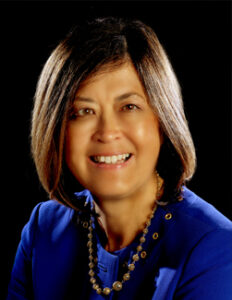Integrating HR and Diversity Strategy
By Edna Chun and Alvin Evans

The new talent paradigm requires the dynamic integration of HR and diversity strategy to optimize and unleash the creativity and innovation of a diverse and talented workforce. Chun and Evan’s new book, The New Talent Acquisition Frontier: Integrating HR and Diversity Strategy presents a systematic approach to integrated HR and diversity talent practices.
In a relentlessly competitive and fast-paced global economy, research reveals that executives in global corporations worldwide recognize the importance of diversity, as well as HR’s pivotal role in fostering inclusive talent practices. Yet, despite this recognition, some organizations still have failed to capitalize on the synergy that can be gained from an integrated HR and diversity strategy. Within these organizations, the diversity and HR functions may exist in any uneasy alliance or have failed to attain the needed synergy to work in collaboration.
Far too often, diversity is not viewed as an essential aspect of an organization’s talent acquisition and management strategy. As such, the diversity function can be sidelined and treated as a silo operation without impact on the organization’s talent equation. Diversity leaders frequently do not have the resources or staff needed to marshal diverse organizational talent, create talent pipelines, and work with their HR partners to develop integrated diversity talent practices. They often must rely on their HR partners to implement training programs that foster cultural change, overcome subtle biases, and embed diversity as a mindset among stakeholders.
In compiling research and case studies for our book, The New Talent Acquisition Frontier: Integrating HR and Diversity Strategy in the Private and Public Sectors and Higher Education, we have identified four primary challenges faced by organizations in their efforts to implement a comprehensive HR and diversity strategy:
1. Diversity is not seen as a collective responsibility owned by stakeholders throughout the organization. Developing collective ownership for integrated HR/diversity efforts involves persuasion and engagement of stakeholders across the boundaries created by geographically dispersed divisions, lines of business, and internal hierarchies. Such collaborative ownership begins with obtaining the active buy-in of HR and diversity leaders themselves.
Carolynn Brooks, chief diversity officer for OfficeMax, describes the evolution of such a partnership in a corporation with over 29,000 employees. “The advantage I have now,” she says, “is that we all sit down together and talk about how we are going to meet the goals and they are aligned with HR rather than in conflict with HR.” She adds, “What I love about it, is we are … collaborating on how we can be a more diverse workforce, and not combating one another, in terms of “that’s not my job,” or “why am I doing this kind of thing.” So maybe we’ve evolved to a place where we all own this….”
2. A clear business case for integrated HR/diversity efforts has not been articulated.While experts understand the need for a clear business case for diversity, the new talent paradigm calls for an active link between HR and diversity in articulating this case. HR leaders often fail to mention their contribution to diversity in their departments’ mission statements. As Shirley Davis, vice president of diversity and inclusion for the Society for Human Resource Management and president of the Success Doctor, explains, “I think that it really comes down to helping people understand why change is necessary. The business case behind the change that we are trying to implement with HR and diversity professionals is not going to go away.”
3. The high turnover among diversity leaders undercuts long-term, systematic HR/diversity change.Unfortunately, the rapid turnover of chief diversity officers, noted in interviews conducted for our book, can undermine efforts to build synergistic HR/diversity practices. Since changing the cultural fabric of an organization to be more responsive to diversity can take three or four years, some companies may focus on quick wins in branding and public relations, rather than grappling with the complex issues associated with long-term cultural change. And in an era of budgetary constraints, organizations may view diversity as a luxury rather than a necessity.
4. HR leaders themselves have not recognized diversity as an essential facet of their responsibilities. Given the existence of HR and diversity silos, some HR leaders are hesitant about entering the diversity realm. They may not view diversity as an essential aspect of their portfolio and skill set. This perspective is heightened when organizational leadership fails to recognize or explicitly define HR’s contributions to diversity work. In such cases, the development of diversity competencies among HR leaders can be overlooked.
Consider the best practice strategies in the systematic orchestration of HR/diversity practices shared by Dr. Rohini Anand, senior vice president and global chief diversity officer for Sodexo. A leading food services and facilities management corporation that employs more than 413,000 people in 80 countries in 34,000 locations, Sodexo has led a phase-based diversity approach that gauges organizational readiness and maturity before moving to the next phase.
Upon joining the executive team in 2002, Anand quickly partnered with the chief human resources officer, who served as a strong supporter and ally in the diversity journey. Both sit on a Diversity Leadership Council chaired by Sodexo CEO, Michel Landel. The structure of the company’s eight market segments (corporate, defense, education, health care, justice, sports and leisure, seniors, and remotes sites) involves a dedicated diversity vice president for each segment reporting to the market president with a dotted line to Anand. The market segments are, in turn, tightly aligned to HR in the market. In essence, Anand believes that Sodexo’s long-term diversity success is attributable to its unique structural organization; clear metrics and accountability for all managers; link to the core business strategy; and cultural change through a top-down, middle-out, and bottom-up approach. She has designed an organizational diversity maturity model with progressive phases that begin with compliance and culminate in inclusion for business breakthroughs.
Complementary and synergistic HR, and diversity talent management practices, is essential to the creation of an inclusive, high-performance workplace that will lead to improved business results. HR’s ability to serve as change agent within complex line cultures provides a valuable complement to diversity leaders as principal owners of diversity efforts. Diversity is an important intangible asset when actualized through HR-related workplace processes that include recruitment, retention, and total rewards. Through an integrated HR/diversity talent strategy, organizations will be equipped to cross the new talent frontier in a competitive global economy and differentiate their performance, products, and services by drawing upon the rich creative potential of their human capital resources.
Alvin Evans
Edna Chun
Edna Chun and Alvin Evans are the award-winning authors of Are the Walls Really Down? Behavioral and Organizational Barriers to Faculty and Staff Diversity and Bridging the Diversity Divide: Globalization and Reciprocal Empowerment in Higher Education, as well as other books dealing with diversity and HR issues. Their most recent book, The New Talent Acquisition Frontier: Integrating HR and Diversity Strategy in the Private and Public Sectors and Higher Education (Stylus, 2013) will be showcased at the upcoming Society for Human Resource Management Diversity and Inclusion Conference in San Francisco.








